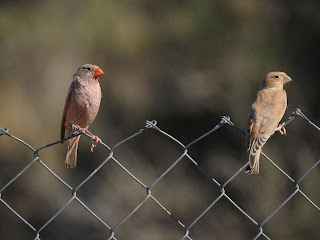IS THIS WHAT THE SHOOTING INDUSTRY DESERVES.
James Tapper in yesterdays Guardian newspaper writes:
Bird flu has managed to do to game shooting what animal rights activists have been trying to achieve for decades – with a little help from Brexit.
Dozens of pheasant and partridge shoots have been called off ahead of the shooting season after an unprecedented outbreak of avian flu in France left gamekeepers in the UK with few birds to rear.
At least 93 gamekeepers have been made redundant so far this year and some shoots are likely to go bankrupt, according to Dominic Boulton, former chair of the Game Farmers’ Association and now its policy adviser.
“That’s 93 families that by and large will have had accommodation that comes with their job, and a vehicle,” he said. “So they may well be facing the loss of everything. There’s going to be a significant number of shoots that don’t go ahead this year.”
About 70% of partridge shoots and nearly a third of planned pheasant shoots may be cancelled this year, according to estimates by Guns On Pegs, a shooting agency.
That means a huge reduction in the 57 million red-legged partridges and pheasants reared and released each year in the UK. Grouse shooting, which heralds the start of the shooting season on 12 August with the “Glorious Twelfth”, will not be affected because grouse are not reared and released.

A red-legged partridge: 57m partridges and pheasants are usually reared in the UK each year. Photograph: TM O Birds/Alamy
Groups such as Wild Justice have campaigned for a reduction in releases, saying that only 30% of the birds are shot and retrieved, which means the survivors indirectly affect protected wildlife. The RSPB says that birds of prey are killed illegally to protect game birds. It also objects to the use of poisonous lead ammunition, which the government is considering outlawing.
This year’s dramatic reduction in game birds will also affect beaters, catering companies and restaurants, Boulton said, adding that 75% of rural land is managed for shooting of some type including game, and the industry is worth about £2.4bn
The initial signs of disruption came at the end of February when the first case of bird flu was discovered in the Loire valley. “Roughly half of the birds that we rear in this country originate from an egg laid in France,” Boulton said, estimating that about 90% of partridges and 40% of pheasants come from producers, with “virtually all” in the Loire valley.
After avian flu is detected on a farm, the birds are culled and 30 days later the farmer can start trading birds domestically – which for French farmers means within the EU. But international exports must wait for 90 days, under World Organisation for Animal Health guidelines adopted into UK and EU law.
The National Gamekeepers’ Organisation (NGO) campaigned for the government to create special licences allowing imports before the 90 days were up. After weeks of negotiations, ministers reached an agreement with the EU for a “bespoke arrangement”, but not France.
“Even if we were still in the EU and operating under the 30-day rule, we would still have been in trouble,” Boulton said, adding that French officials had created false hope among shooters that imports might restart in time. “If you want to start shooting on 1 October [when the pheasant season begins], your birds need to be eight weeks old by the end of June when they can be released into the wild.”

Forty percent of pheasants come from producers. Photograph: blickwinkel/Alamy
The last outbreak in France was detected on 17 May and 16 million farmed birds, including poultry, were culled. By 22 June, there had been 1,464 bird flu cases, according to the Department for Environment, Food and Rural Affairs (Defra).




